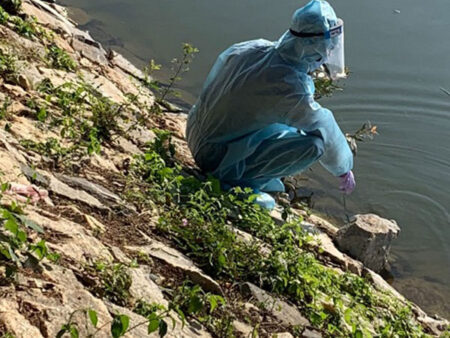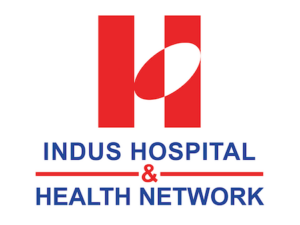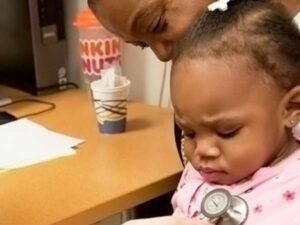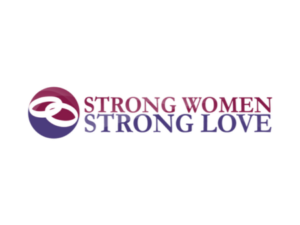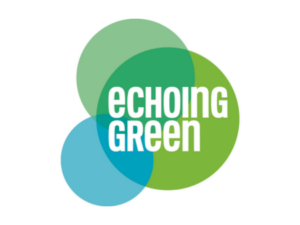Precision Health Platform, built by public health organization Swasti, helps communities access information about COVID. The innovative approach uses wastewater testing to track the spread of the virus and makes the results visible on a public dashboard.
Dr. Angela Chaudhuri of Swasti spoke with Ruth Terry on February 15, 2023. Click here to read the full conversation with insights highlighted.
Ruth Terry: Can you describe the problem that you’re addressing and how you’re responding to it?
Dr. Angela Chaudhuri: Swasti is a public health organization. It’s a not-for-profit that is based out of India and works on making everyday wellbeing a possibility for some of the world’s most marginalized population. We have a whole bunch of solutions, some that are in pilot [stages], some that we are working on, and some that have gone to scale. This particular one that I’m going to be speaking to you about is called the Precision Health Platform. It’s one of our solutions that has gone to scale and we were solving two problems. One problem was during COVID times, there was limited access to COVID diagnostics so only people who knew where to find it and were able to afford it and people who had the right health seeking behavior were able to get the tests and know if they were at risk or sick. That isn’t the case for most people and particularly for marginalized people, they had no idea.
That’s the first problem, access to diagnostics for vulnerable people. Access to this would tell them how to be safe, where to be safe, the fact that they had to be safe by masking and not exposing themselves and it would’ve also saved livelihoods, of course. The second problem we were solving was information asymmetry. Only some clinical data was available to people, but not a lot of information was in the public. We knew the public had a right to know the perceived risks that were around them so they could make some choices about their lives. We read a paper that was pushed in an article written by a Dutch water research agency called KWR Institute, we learned that we were able to track COVID variants in wastewater, and if we tracked it over time, we would know what our risks were because there were signals to show the broader [prevalence], it was basically the tip of the iceberg, but it was still a tip that was possible to be seen.
The solution was twofold. It’s not only about testing the wastewater for COVID across the city with a population of 1.3 million, but it was also making a dashboard that is public and understandable by everyone. Having journalists like yourselves and others look at the dashboard and come to easy conclusions so that you can write about it, and so the public can actually understand what’s going on around them and take adequate measures. That was the problem we were solving for and after two and a half years now, we are in five cities. One of our biggest results is that the government owns it and uses it and even retweets it using their own COVID update handle. They accept this public dashboard, which is very rare for our country and many other countries, I would imagine, and also accept the perceived risks that it has to share.
Ruth Terry: Who would you say is benefiting from your work? Is it the citizens? Journalists and even the government?
Dr. Angela Chaudhuri: Citizens. The government definitely benefits from it because they know they have to prioritize their action, they need to bump up masking, possibly redirect resources for vaccination, et cetera.
Ruth Terry: What would you say makes your approach distinctive?
Dr. Angela Chaudhuri: One is that there isn’t anything like this. It was a white space completely. Second, it’s really about the simplicity of the communication. There are surveillance programs now across the world, but most of the dashboards are not public. One is that it is a public dashboard. Second is that the dashboard is easily understandable. We’ve taken off a lot of the complications of science. You don’t have to be a science graduate to be able to understand the dashboard. And the third is using popular social media to get it out there. I would say that part is distinctive. The other part that is distinctive is that it’s a unique collaboration.
There’s universities, there’s private labs, there’s public health organizations that are citizen-centric, organizations that work for the rights and voices of the people. There’s the government. They have all come together in order for it to happen. Most of the other surveillance systems are either run only by academic institutions or by private labs or the government. This one is very collaborative in nature, with every partner bringing in their strengths. It also has multiple government agencies, from a municipal cooperation as well as the pollution and water boards.
Ruth Terry: Do you have a specific example that illustrates the impact?
Dr. Angela Chaudhuri: Yeah, there’s quite a bit actually. We started right around the time of the second wave, and Bangalore was one of the few cities that didn’t slip into very active COVID complacency because they knew there were a lot of other spikes. Bangalore, as a city, had more mask mandates than anywhere else and also was able to prevent quite a lot of the subsequent infections that came through. From airport limitations to home quarantining to masking, all of these issues that the government took [is] the basis of our program.
Ruth Terry: What are some insights or lessons that you would share with others who wanted to have the same kind of impact or that want to replicate a similar kind of project?
Dr. Angela Chaudhuri: One of the things would be that, if it’s a tricky problem that hasn’t been solved earlier, there’s a good chance that the tricky problem requires a diverse set of stakeholders with very diverse experience. One of the key insights we got from this experience was that creating partnerships between very different people who speak in different languages takes a lot of time and commitment. It’s a rigorous commitment to open and honest communication.
I’ll give you an example. We have water experts, public health professionals, biologists, clinicians, chemists, businessmen, engineers, data analysts from the government, non-governmental, and private [sector], from two different countries. Each of these people have a different language, different priorities, mandates, and responsibilities. There’s also inter-organization dynamics which are fraught, non-linear, and very unpredictable. The collaboration and the partnership was really stable when every organization was able to articulate its own agenda and knew its role and scope, to minimize destructive competition. Having the resources to keep the relationships running smoothly enough for the program and putting in the time and effort and honest and respectful communication. I know what I’m saying is not a groundbreaking truth, but the point is that we’ve seen collaborations fail when the resources and the time are not allocated properly. That would be a teachable lesson.
Ruth Terry: Were there any specific things that you put in place, like safeguards or methods of communication or meeting schedules or something, that kept that communication flowing with so many different people?
Dr. Angela Chaudhuri: One of the biggest safeguards was to have a media policy, which we made everyone sign and agree to. That took some time because we had to agree to it and put it up in public. This program attracted a lot of press, maybe that is one of the reasons that we are talking today as well, because the COVID data is political, it can be a political hot potato. Everyone wants to claim something under the sun. So we made a policy that people from the Precision Health Platform would talk about the platform alone and what it is capable of doing, but will not talk about whether there is COVID or not, whether we are in danger or not, because that’s purely the role of the government. We put up the government’s name and phone number and contact to be reached in case anything happens.
We also told the government that we will not be speaking about this and you can hold us to it. That was one big safeguard that we kept because we know that in another city, when the surveillance program was talking about COVID and making comments, the government shut that program down and it never recovered from it. So that was one. The second is, for two and a half years we meet every Saturday from 10 to 11, even when there is nothing burning to discuss, we still meet to check in on each other and share other progress and opportunities. We have goals, we have a standard agenda, and then we have agendas that each partner wants to share and bring to the table. We do cross exposures and learning and we do other joint programs like writing papers together. We ensure that everyone’s agenda is upfront, so we are able to check the boxes on as many people’s individual organizational agenda as possible and make other opportunities besides just this one available.
Ruth Terry: Can you describe something that you tried that just didn’t work at all? I think that’ll help people who face similar challenges.
Dr. Angela Chaudhuri: We are two years in and I was hoping that by last year the government would make financing available and take the program over by themselves. That hasn’t happened yet. The fact that a non-medical organization and its partners are doing surveillance for a city is not a great result to have. It should be taken by the government. They can use support, but it should be done by the government and financed by the government. I think that, in itself, is a result that I would say is a failure. It’s a joint failure. Maybe we did not make the case strongly enough or the government did not prioritize surveillance and preparedness strongly enough. I would say that would be the main failure.
Ruth Terry: Is it something that you’re trying to address still?
Dr. Angela Chaudhuri: That is the major goal. Maybe I was asking for too much. Everyone said, oh, you’re talking about something that takes 10 years to do in one year, so we have another year. I want to give it a go and then we’ll see. There isn’t a single example, except I would say for New York, who’s ever taken surveillance as a mainstream part of their work. It’s not something that’s common either, so we’ll see. It’s something that I hope not just for the city of Bangalore, but I hope for all of them, particularly the lower middle income. But I’m happy for all the countries to take surveillance very seriously because if we know what’s coming for us, we can plan better.
Ruth Terry: Is there a way that you’ve been working on the government to take more ownership of the project? Are you meeting with them?
Dr. Angela Chaudhuri: Yeah, we have a partner. There’s many regular meetings. Unfortunately, the nature of government leadership here, which may be similar to other cities and countries as well, is that there’s a lot of leadership change. Each time there’s a change, advocacy starts all over again. Things are pretty short term when it comes to leadership, and that is indeed a challenge. Until there is something at a broader systemic level, I don’t see that it’s going to change anytime soon. We have a partner who works with the governments very well on different issues and they’ve been the ones that were able to make these connections and make the political will happen because it’s quite hard, even for a third party to do surveillance for a city. Even getting permission to do this is quite impossible. So without that partner, I don’t think we’d be anywhere.
Ruth Terry: Are you working to advance system level change in the field? Maybe you can tell me a little bit more about some of the advocacy that you and the people within your organization have been doing with the government?
Dr. Angela Chaudhuri: At the systems level, we want to ignite and inspire institutionalization and mainstreaming of environmental surveillance. We want this to be a critical public health tool for signaling, for planning, for resource allocation – from the cities to the national level to regional and global platforms. We seek its acceptance at a level of health policy. We also want to seek data and health equity as a result of the surveillance because the survey is citywide, so it speaks to every population, not just people who have access to diagnostics. The challenge here is in the guise of data privacy and protection clauses. The general population often doesn’t have access to vital information on health hazards that are in their environment. Something like this can really help people make choices about their health and lifestyle. In Delhi, for example, and even in a few parts of Bangalore, many cities now have these air pollution monitors that tell you what the pollution level is.
There’s an awareness about pollutants and viruses, et cetera and wastewater can [provide] the information that you can use. In terms of challenges, there are so many partners, so many stakeholders at the government level, there’s not an institutional mechanism to govern environmental surveillance. It’s a completely white space that we’re occupying right now. If there isn’t an institutional mechanism, we don’t yet know who might be the natural owners. Is it the clinical research guys? Is it the communicable disease guys? Is it the municipal corporation? Is it the state government? Is it the health government? It’s not only an Indian issue, it’s an issue across all the places, in all the different countries. Active surveillance requires patient capital, leadership foresight. And because leaders are forced to deal with immediate priorities and benefits from short-term gains, surveillance often gets pushed to the side.
The importance of surveillance is only seen when the context changes, if there’s a spike in infection or there is a dip after the peak. Sustaining political interest and financing is unattractive because leadership wants short-term gains. This is a long-term gain thing.
Ruth Terry: How do you see your work evolving over the next five years?
Dr. Angela Chaudhuri: We’ve already started evolving it into a climate and health dashboard with COVID surveillance. Right now we are working on making data powered by AI to look at vulnerable populations, who’s at climate risk, like heat waves, flooding? We are starting with heat waves and flooding right now. And heat also increases a propensity for malaria and other infectious diseases. We want to be able to use AI to tell us who these populations are that are susceptible and use this dashboard as an early warning mechanism. So we are going beyond just doing wastewater sampling. In wastewater alone, we’ve expanded from COVID to the flu. We were able to say, “Mask up, the flu is coming,” even before the flu actually hit us in a really bad way and when there was a threat for monkeypox.
There’s also antimicrobial resistance that we are tracking in wastewater. Other than that, we’re overlaying information that we know about climate and working with community-based organizations on the ground to be able to strengthen them so that they can get communities ready to deal with heat waves and floods and the infections that are obviously around us. That’s where we are morphing to.
We have more than 400 organizations as community-based partners that represent about 14 types of vulnerable communities, which includes migrants, women in sex work, transgender and men who have sex with men, people with disabilities, small holder farmers and agri-laborers, people who don’t have land, landless laborers, construction workers, widows, fishers, women fishers, particularly dairies. We have a list of 12 to 14 vulnerable communities that we work with, tribal populations, et cetera. We are looking at what the dangers are, besides socioeconomic, what are the environmental dangers that will drive them further into catastrophe. And working with community-based organizations to prepare them and make some adaptations to the climate.
Ruth Terry: Is there anything else that you wanted to add or anything you felt like was important to the conversation?
Dr. Angela Chaudhuri: Well, yes, in the sense that there isn’t a lot of financing available for surveillance. There are only a few partners. There’s maybe a handful of people who are interested in patiently supporting surveillance. There needs to be a whole lot more investments in surveillance because that is what will get us through early warning, will get us through planning for disasters, rather than reacting after the disasters hit. There needs to be more active financiers before the governments get their act together. Particularly for lower, middle income countries because when there’s a catastrophe, they really struggle to get back on top.
I think that is the most important piece because it’s already written up in policy documents that surveillance is important, but there’s just not enough environmental surveillance going on. We need more spaces for intersectoral collaboration, particularly for climate and health, and it requires institutions and platforms that bring the bricks together, the glue that joins the dots together. The glue is sort of missing. The dots all exist, but there’s not enough of the glue to go around. Looking for those platforms and institutional mechanisms and organizations who have the ability to work across diverse actors and bring them together, that’s something that I would call for action.
Click here to read the full conversation with insights highlighted.
Ruth Terry is an award-winning social impact writer based in Istanbul, Turkey, with bylines in Al Jazeera, BBC Travel, National Geographic, NBC Think, The New York Times, The Washington Post, Time, and more. Writing across topics and genres, she has covered everything from race to roller skating through a lens of social justice and equity.
* This interview has been edited and condensed.
Learn from other organizations that created innovative solutions during the COVID pandemic.

